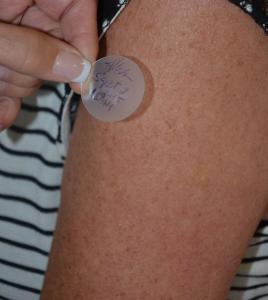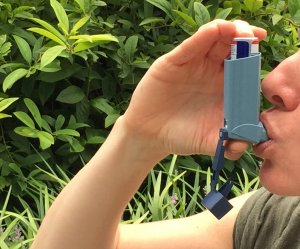1.2: Absorption
- Page ID
- 24201
\( \newcommand{\vecs}[1]{\overset { \scriptstyle \rightharpoonup} {\mathbf{#1}} } \)
\( \newcommand{\vecd}[1]{\overset{-\!-\!\rightharpoonup}{\vphantom{a}\smash {#1}}} \)
\( \newcommand{\dsum}{\displaystyle\sum\limits} \)
\( \newcommand{\dint}{\displaystyle\int\limits} \)
\( \newcommand{\dlim}{\displaystyle\lim\limits} \)
\( \newcommand{\id}{\mathrm{id}}\) \( \newcommand{\Span}{\mathrm{span}}\)
( \newcommand{\kernel}{\mathrm{null}\,}\) \( \newcommand{\range}{\mathrm{range}\,}\)
\( \newcommand{\RealPart}{\mathrm{Re}}\) \( \newcommand{\ImaginaryPart}{\mathrm{Im}}\)
\( \newcommand{\Argument}{\mathrm{Arg}}\) \( \newcommand{\norm}[1]{\| #1 \|}\)
\( \newcommand{\inner}[2]{\langle #1, #2 \rangle}\)
\( \newcommand{\Span}{\mathrm{span}}\)
\( \newcommand{\id}{\mathrm{id}}\)
\( \newcommand{\Span}{\mathrm{span}}\)
\( \newcommand{\kernel}{\mathrm{null}\,}\)
\( \newcommand{\range}{\mathrm{range}\,}\)
\( \newcommand{\RealPart}{\mathrm{Re}}\)
\( \newcommand{\ImaginaryPart}{\mathrm{Im}}\)
\( \newcommand{\Argument}{\mathrm{Arg}}\)
\( \newcommand{\norm}[1]{\| #1 \|}\)
\( \newcommand{\inner}[2]{\langle #1, #2 \rangle}\)
\( \newcommand{\Span}{\mathrm{span}}\) \( \newcommand{\AA}{\unicode[.8,0]{x212B}}\)
\( \newcommand{\vectorA}[1]{\vec{#1}} % arrow\)
\( \newcommand{\vectorAt}[1]{\vec{\text{#1}}} % arrow\)
\( \newcommand{\vectorB}[1]{\overset { \scriptstyle \rightharpoonup} {\mathbf{#1}} } \)
\( \newcommand{\vectorC}[1]{\textbf{#1}} \)
\( \newcommand{\vectorD}[1]{\overrightarrow{#1}} \)
\( \newcommand{\vectorDt}[1]{\overrightarrow{\text{#1}}} \)
\( \newcommand{\vectE}[1]{\overset{-\!-\!\rightharpoonup}{\vphantom{a}\smash{\mathbf {#1}}}} \)
\( \newcommand{\vecs}[1]{\overset { \scriptstyle \rightharpoonup} {\mathbf{#1}} } \)
\( \newcommand{\vecd}[1]{\overset{-\!-\!\rightharpoonup}{\vphantom{a}\smash {#1}}} \)
\(\newcommand{\avec}{\mathbf a}\) \(\newcommand{\bvec}{\mathbf b}\) \(\newcommand{\cvec}{\mathbf c}\) \(\newcommand{\dvec}{\mathbf d}\) \(\newcommand{\dtil}{\widetilde{\mathbf d}}\) \(\newcommand{\evec}{\mathbf e}\) \(\newcommand{\fvec}{\mathbf f}\) \(\newcommand{\nvec}{\mathbf n}\) \(\newcommand{\pvec}{\mathbf p}\) \(\newcommand{\qvec}{\mathbf q}\) \(\newcommand{\svec}{\mathbf s}\) \(\newcommand{\tvec}{\mathbf t}\) \(\newcommand{\uvec}{\mathbf u}\) \(\newcommand{\vvec}{\mathbf v}\) \(\newcommand{\wvec}{\mathbf w}\) \(\newcommand{\xvec}{\mathbf x}\) \(\newcommand{\yvec}{\mathbf y}\) \(\newcommand{\zvec}{\mathbf z}\) \(\newcommand{\rvec}{\mathbf r}\) \(\newcommand{\mvec}{\mathbf m}\) \(\newcommand{\zerovec}{\mathbf 0}\) \(\newcommand{\onevec}{\mathbf 1}\) \(\newcommand{\real}{\mathbb R}\) \(\newcommand{\twovec}[2]{\left[\begin{array}{r}#1 \\ #2 \end{array}\right]}\) \(\newcommand{\ctwovec}[2]{\left[\begin{array}{c}#1 \\ #2 \end{array}\right]}\) \(\newcommand{\threevec}[3]{\left[\begin{array}{r}#1 \\ #2 \\ #3 \end{array}\right]}\) \(\newcommand{\cthreevec}[3]{\left[\begin{array}{c}#1 \\ #2 \\ #3 \end{array}\right]}\) \(\newcommand{\fourvec}[4]{\left[\begin{array}{r}#1 \\ #2 \\ #3 \\ #4 \end{array}\right]}\) \(\newcommand{\cfourvec}[4]{\left[\begin{array}{c}#1 \\ #2 \\ #3 \\ #4 \end{array}\right]}\) \(\newcommand{\fivevec}[5]{\left[\begin{array}{r}#1 \\ #2 \\ #3 \\ #4 \\ #5 \\ \end{array}\right]}\) \(\newcommand{\cfivevec}[5]{\left[\begin{array}{c}#1 \\ #2 \\ #3 \\ #4 \\ #5 \\ \end{array}\right]}\) \(\newcommand{\mattwo}[4]{\left[\begin{array}{rr}#1 \amp #2 \\ #3 \amp #4 \\ \end{array}\right]}\) \(\newcommand{\laspan}[1]{\text{Span}\{#1\}}\) \(\newcommand{\bcal}{\cal B}\) \(\newcommand{\ccal}{\cal C}\) \(\newcommand{\scal}{\cal S}\) \(\newcommand{\wcal}{\cal W}\) \(\newcommand{\ecal}{\cal E}\) \(\newcommand{\coords}[2]{\left\{#1\right\}_{#2}}\) \(\newcommand{\gray}[1]{\color{gray}{#1}}\) \(\newcommand{\lgray}[1]{\color{lightgray}{#1}}\) \(\newcommand{\rank}{\operatorname{rank}}\) \(\newcommand{\row}{\text{Row}}\) \(\newcommand{\col}{\text{Col}}\) \(\renewcommand{\row}{\text{Row}}\) \(\newcommand{\nul}{\text{Nul}}\) \(\newcommand{\var}{\text{Var}}\) \(\newcommand{\corr}{\text{corr}}\) \(\newcommand{\len}[1]{\left|#1\right|}\) \(\newcommand{\bbar}{\overline{\bvec}}\) \(\newcommand{\bhat}{\widehat{\bvec}}\) \(\newcommand{\bperp}{\bvec^\perp}\) \(\newcommand{\xhat}{\widehat{\xvec}}\) \(\newcommand{\vhat}{\widehat{\vvec}}\) \(\newcommand{\uhat}{\widehat{\uvec}}\) \(\newcommand{\what}{\widehat{\wvec}}\) \(\newcommand{\Sighat}{\widehat{\Sigma}}\) \(\newcommand{\lt}{<}\) \(\newcommand{\gt}{>}\) \(\newcommand{\amp}{&}\) \(\definecolor{fillinmathshade}{gray}{0.9}\)The first stage of pharmacokinetics is known as absorption. Absorption occurs after drugs enter the body and travel from the site of administration into the body’s circulation. Medications can enter the body through various routes of administration. Common routes to administer medications include the following examples:
- oral (swallowing an aspirin tablet)
- enteral (administering to the GI tract such as via a NG tube)
- rectal (administering an acetaminophen [Tylenol] suppository)
- inhalation (breathing in medication from an inhaler)
- intramuscular (getting a flu shot in the deltoid muscle)
- subcutaneous (injecting insulin into the fat tissue beneath the skin)
- transdermal (wearing a nicotine patch)
When a medication is administered orally or enterally, it faces its biggest hurdle during absorption in the gastrointestinal (GI) tract. Medications made of protein that are swallowed or otherwise absorbed in the GI tract may quickly be deactivated by enzymes as they pass through the stomach and duodenum. If the drug does get into the blood from the intestines, part of it will be broken down by liver enzymes, known as the first pass effect, and some of it will escape to the general circulation to either become protein-bound (inactive) or stay free (and create an action at a receptor site). These metabolic effects are further described in the “Metabolism” section later in this chapter. Thus, providers who prescribe medications, as well as nurses, understand that several doses of an oral medication may be needed before enough free drug stays active in the circulation to exert the desired effect.
What to do?
A workaround to the first pass effect is to administer the medication using alternate routes such as dermal, nasal, inhalation, injection, or intravenous. Alternative routes of medication administration bypass the first pass effect by entering the bloodstream directly or via absorption through the skin or lungs. Medications that are administered directly into the bloodstream (referred to as intravenous medications) do not undergo absorption and are fully available for distribution to tissues within the body.
Alternative routes of medication have other potential problems to consider. For example, injections are often painful and cause a break in the skin, an important barrier to infection. They can also be costly and difficult to administer daily, may cause localized side effects, or contribute to unpredictable fluctuations in medication blood levels.

Transdermal application of medication is an alternate route that has the primary benefit of slow, steady drug delivery directly to the bloodstream—without passing through the liver first. (See Figure 1.2[1] for an image of applying a transdermal patch.) Drugs delivered transdermally enter the blood via a meshwork of small arteries, veins, and capillaries in the skin. This makes the transdermal route of drug delivery particularly useful when a medication must be administered over a long period of time to control symptoms. For example, transdermal application of fentanyl, a pain medication, can provide effective pain management over a long period of time; the scopalamine patch can control motion sickness over the duration of a cruise ship vacation; and the nitroglycerin patch is used to control chronic chest pain. Despite their advantages, skin patches have a significant drawback in that only very small drug molecules can enter the body through the skin, making this application route not applicable for all types of medications.
Inhaling drugs through the nose or mouth is another alternative route for rapid medication delivery that bypasses the liver (see Figure 1.3).[2]) Metered-dose inhalers have been a mainstay of asthma therapy for several years, and nasal steroid medications are often prescribed for allergy and sinus problems.

Emerging discoveries & recent developments
Researchers are currently exploring alternative methods of drug delivery such as the use of inhaled insulin powders. Afrezza® is an example of an inhaled insulin approved by the Food and Drug Administration (FDA) to assist with blood sugar control. This technology stems from novel uses of chemistry and engineering to manufacture insulin particles of just the right size for absorption. If too large, the insulin particles could lodge in the lungs; if too small, the particles will be exhaled.[3]
Lifespan Considerations
Neonate & Pediatric: Gastric absorption in neonate and pediatric patients varies from that of their adult counterparts. In neonate and pediatric patients, the acid-producing cells of the stomach are immature until around the age of one to two years. Additionally, gastric emptying may be decreased because of slowed or irregular peristalsis (forward bowel movement). The liver of a neonatal or pediatric patient continues to mature, experiencing a decrease in first-pass elimination, resulting in higher drug levels in the bloodstream.[4]
Older Adult: As a natural result of aging, older adults will experience decreased blood flow to tissues within the GI tract. In addition, there may be changes in the gastric (stomach) pH that may alter the absorption of certain medications. Older adult patients may also experience variations in available plasma proteins, which can impact drug levels of medications that are highly protein-bound. Consideration must also be given to the use of subcutaneous and intramuscular injections in older patients experiencing decreased cardiac output. Decreased drug absorption of medications can occur when peripheral circulation is decreased. Finally, as adults age, they often have less body fat, resulting in decreased absorption of medication from transdermal patches that require adequate subcutaneous fat stores for proper absorption.[5]
Table 1 summarizes route considerations that a nurse should consider when administering medication.
Table 1. Route Considerations
Oral (PO) or Enteral (NGT, GT, OGT) Ingestion
- Oral route is a convenient route for administration of solid as well as liquid formulations.
- Additional variables that may influence the rate and extent of absorption include enteric coating or extended-release formulations, acidity of gastric contents, gastric emptying rate, dietary contents, and presence of other drugs.
- First pass effect: Blood containing the absorbed drug passes through the liver, which can deactivate a substantial amount of the drug and decrease its bioavailability (the percentage of dose that reaches the systemic circulation).
Parenteral Injection
- Subcutaneous and intramuscular administration: Injections can be difficult for patients to self-administer at home or to administer on a daily basis. They can be costly and painful. Injections also cause a break in skin that is an important barrier to infection, can cause fluctuation in drug levels. and can cause localized side effects to skin.
- Intravenous (IV): IV drugs are fully available to tissues after administration into the bloodstream, offering complete bioavailability and an immediate effect. However, this route requires intravenous access that can be painful to the patient and also increases risk for infection. Medications must be administered in sterile fashion, and if two products are administered simultaneously, their compatibility must be verified. There is also an increased risk of toxicity.
Pulmonary Inhalation
- Inhalation allows for rapid absorption of drugs in gaseous, vaporized, or aerosol form.
- Absorption of particulates/aerosols depends on particle/droplet size, which influences depth of entry through the pulmonary tree to reach the alveoli.
- The ability of the patient to create successful inhalation, especially in the presence of bronchospasm, may also influence depth of entry in the pulmonary tree.
Topical and Transdermal Application
- Topical creams, lotions, and ointments are generally used for local effect; transdermal patch formulations are used for systemic effect.
- Absorption through the buccal or sublingual membranes may be rapid.
- Absorption through skin is generally slower but produces steady, long-term effect that avoids the first pass effect. However, absorption of medication is affected by blood flow to the skin. [6]
Interactive Activity
- "Applying transdermal patch.jpg" by British Columbia Institute of Technology (BCIT) is licensed under CC BY 4.0↵
- “Adult Using Asthma Inhaler” by NIAID is licensed under CC BY 2.0↵
- This work is a derivative of Medicines by Design by US Department of Health and Human Services, National Institute of Health, National Institute of General Medical Sciences and is available in the public domain. ↵
- Fernandez, E., Perez, R., Hernandez, A., Tejada, P., Arteta, M., & Ramos, J. T. (2011). Factors and mechanisms for pharmacokinetic differences between pediatric population and adults. Pharmaceutics, 3(1), 53–72. https://doi.org/10.3390/pharmaceutics3010053↵
- Fernandez, E., Perez, R., Hernandez, A., Tejada, P., Arteta, M., & Ramos, J. T. (2011). Factors and mechanisms for pharmacokinetic differences between pediatric population and adults. Pharmaceutics, 3(1), 53–72. https://doi.org/10.3390/pharmaceutics3010053↵
- This work is a derivative of Principles of Pharmacology by LibreTexts licensed under CC BY-NC-SA 4.0. ↵


